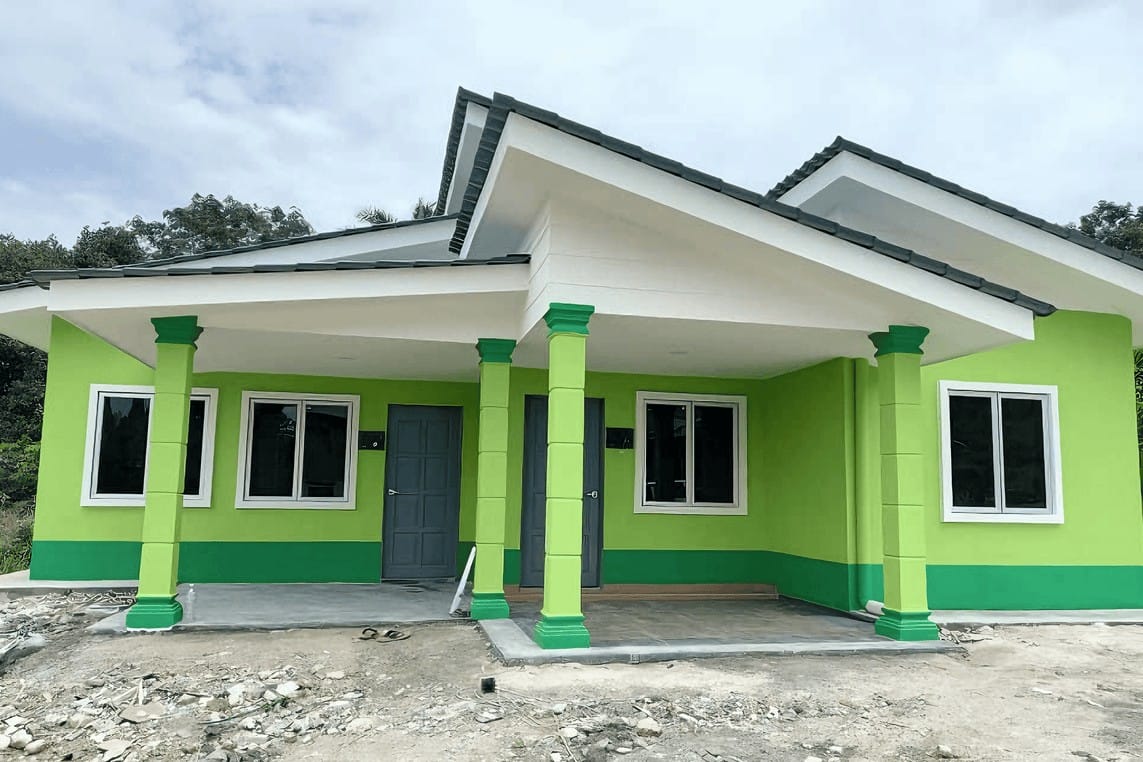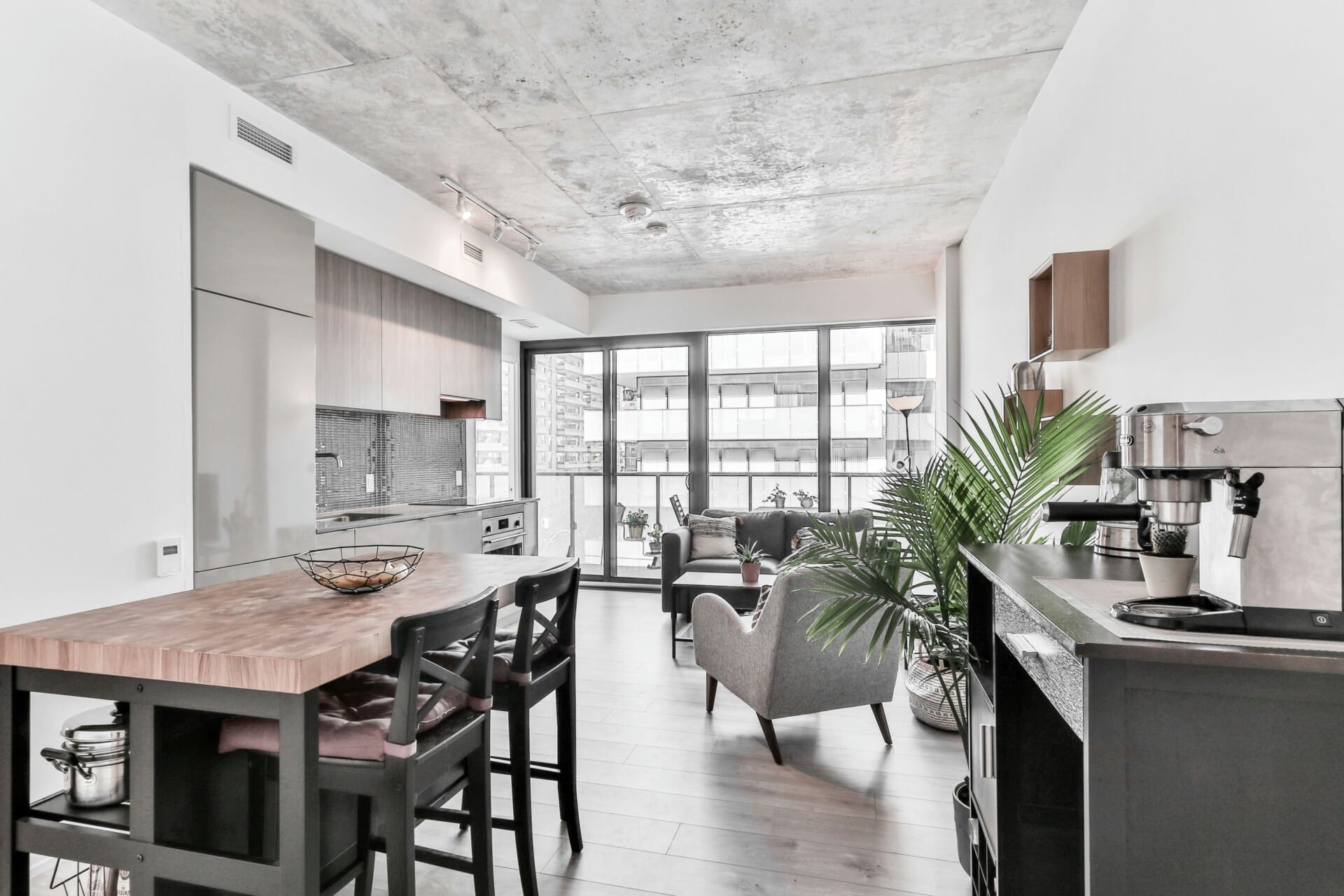Why Commercial Construction in Malaysia is Not for the Faint of Heart | RumahHQ

Sure! Here’s a casual yet engaging introduction for your article:
When it comes to commercial construction in Malaysia, it’s a bit like navigating a bustling pasar malam—exciting, a little chaotic, and definitely not for the faint of heart. From navigating complex regulations and unpredictable weather to managing tight budgets and diverse stakeholder expectations, the commercial construction landscape can feel like a wild ride. But hey, that’s what makes it all the more fascinating, right? Whether you’re a seasoned pro or just dipping your toes into the industry, understanding the unique challenges and opportunities here can help you thrive. So, buckle up as we dive into why taking on commercial construction in Malaysia requires a mix of courage, strategy, and a sprinkle of local insight!
The Complex Landscape of Commercial Construction in Malaysia
The commercial construction scene in Malaysia is a vibrant mix of innovation, challenges, and opportunities. With rapid urbanization and a growing economy, developers are continually pushed to meet the rising demand for office spaces, retail outlets, and mixed-use developments. However, this booming market doesn’t come without its hurdles. The process often feels like navigating a labyrinth, where compliance with regulations and understanding local market dynamics is key.
Developers and contractors must be agile and informed to tackle the ever-shifting landscape of regulations and standards. Here are a few of the key factors influencing commercial construction in Malaysia:
- Government Regulations: Strict adherence to guidelines is crucial, especially with bodies like the Construction Industry Development Board (CIDB) overseeing compliance.
- Material Costs: Fluctuating prices and availability can impact project budgets significantly.
- Skilled Labor Shortage: Finding qualified professionals poses a significant challenge, affecting timelines and quality.
Interestingly, while the obstacles are substantial, there’s a silver lining. Many companies have begun investing in technology to streamline processes and enhance productivity. This shift not only mitigates some challenges but also opens doors for improved project management. Here’s a brief overview of some emerging trends shaping the future of commercial construction:
| Trend | Description |
|---|---|
| Sustainable Construction | Focus on eco-friendly materials and practices is growing, promoting energy efficiency. |
| Smart Technology Integration | The use of IoT devices for smarter building management and maintenance. |
| Prefabrication and Modular Building | Offsite construction methods streamline traditional processes and save time. |

Navigating Regulatory Hurdles: A Necessary Challenge
Diving into commercial construction in Malaysia can feel like stepping into a labyrinth. The landscape is dotted with regulatory challenges that can make or break a project. Each region comes with its own set of rules, and the bureaucracy can be daunting. From securing the right permits to navigating zoning laws, it’s essential to have a firm grasp of local regulations. A misstep in understanding these can lead to significant delays and unexpected costs.
The key to overcoming these challenges lies in early preparation. Familiarizing yourself with the necessary regulations will save you headaches down the line. Here’s a quick checklist to consider:
- Research local building codes and standards.
- Understand the environmental regulations in your area.
- Engage with local authorities early in the project.
- Consult with legal advisors to interpret complex regulations.
To illustrate the complexity of the process, consider a simple table that highlights common types of permits and their typical requirements:
| Permit Type | Common Requirements |
|---|---|
| Building Permit | Architectural plans, land ownership documents |
| Environmental Impact Assessment | Project proposal, environmental management plan |
| Zoning Approval | Zoning maps, project details |
Ultimately, while it may feel overwhelming at times, mastering the maze of regulations not only ensures compliance but also positions your project for success. Patience and diligence in navigating these hurdles will pay off in the long run, allowing you to focus on what you do best: building and innovating in Malaysia’s vibrant construction industry.

Understanding Local Market Dynamics for Project Success
Commercial construction in Malaysia demands an acute awareness of local market dynamics, and it’s this intricacy that often catches newcomers off guard. Understanding the helping hands and hurdles within this vibrant ecosystem can spell the difference between a project’s rise or its premature demise. Factors such as local regulations, economic fluctuations, and cultural nuances all play crucial roles. Construction laws can vary widely from state to state, impacting everything from environmental compliance to labor laws. Getting in tune with these regulations early can save a mountain of headaches later on.
The economic landscape of Malaysia is unique, influenced by global market trends and local demands. Recent statistics show that the construction sector has been on a rollercoaster ride, affected by both domestic policies and international influences. Here’s a brief overview:
| Year | Growth Rate (%) | Challenges |
|---|---|---|
| 2020 | -5.9 | COVID-19 Pandemic |
| 2021 | 3.5 | Supply Chain Disruptions |
| 2022 | 8.9 | Material Price Surge |
| 2023 | 5.2 | Labor Shortages |
Tapping into the local workforce and supply chains is vital for project success. The key factors you might want to consider include:
- Vendor Relationships: Building trust with local suppliers can lead to better pricing and reliability.
- Skilled Labor Availability: Understand where to find skilled workers who can execute your vision effectively.
- Cultural Insights: A solid grasp of cultural practices will facilitate smoother operations and project acceptance.
By immersing yourself in these dynamics, you can position your project for success amidst the challenges present in Malaysia’s commercial construction landscape. It’s not just about bricks and mortar; it’s about understanding the very fabric that holds your project together.

Cultivating Strong Partnerships with Key Stakeholders
In the bustling realm of commercial construction in Malaysia, building robust relationships with key stakeholders is essential for navigating the complexities and challenges of the industry. Recognizing the importance of collaboration, project managers and construction firms should focus on transparency and open communication. This fosters trust and engagement, ensuring that everyone involved—clients, contractors, suppliers, and the local community—feels valued and heard.
To effectively cultivate these partnerships, consider implementing the following strategies:
- Regular Check-ins: Schedule periodic meetings to address concerns and updates, ensuring relationships are maintained and nurtured.
- Active Listening: Show genuine interest in stakeholders’ input and feedback; it’s essential for making informed decisions and adjustments.
- Shared Vision: Develop a mutual understanding of project goals and objectives that align with everyone’s interests, creating a united front.
Another critical aspect to remember is the local context. Different regions in Malaysia may have unique needs and expectations. Awareness of cultural nuances can bridge gaps and enhance cooperation. A simple table illustrating potential stakeholders in a typical commercial construction project might include:
| Stakeholder | Role | Key Expectation |
|---|---|---|
| Property Developer | Initiator | Profitability |
| Contractor | Executor | Quality Work |
| Local Authorities | Regulatory | Compliance |
| Community | Beneficiary | Social Impact |
Embracing Technological Advancements for Competitive Edge
In the dynamic landscape of commercial construction in Malaysia, embracing cutting-edge technology is no longer just an option; it’s a necessity. Companies that harness the power of innovations like Building Information Modeling (BIM), drones for site surveying, and augmented reality for project visualization gain a significant advantage. These advancements not only streamline the construction process but also enhance collaboration among stakeholders, ensuring that projects stay on track and within budget.
By prioritizing digital tools, businesses can significantly reduce errors and improve efficiency. Consider these essential technologies that are reshaping the industry:
- 3D Printing: Speeds up the construction of complex structures.
- Green Technologies: Minimizes waste and supports sustainable building practices.
- Cloud-Based Project Management: Facilitates real-time access to project updates.
Moreover, the adaptability of technologies provides firms with the flexibility to respond to changing market demands swiftly. It’s essential to foster a culture of innovation within teams, encouraging them to explore and propose new tech solutions. As competition heats up, organizations that lead the charge in technological adoption will not only weather the storm but thrive, carving out a niche in Malaysia’s construction ecosystem.

Mitigating Risks in an Uncertain Economic Climate
Navigating through an unpredictable economic landscape can deliver significant challenges for those in the commercial construction industry. To stay afloat, developers must gear up with robust strategies that not only mitigate risks but also embrace emerging opportunities. This often means conducting thorough market analysis and being flexible enough to pivot as conditions change. Consider these strategies:
- Financial Planning: Establish a detailed budget that accounts for potential fluctuations in material costs and labor rates.
- Diversifying Projects: Rather than putting all eggs in one basket, explore a range of projects across different sectors—be it hospitality, retail, or office spaces—to shield against sector-specific downturns.
- Strong Partnerships: Cultivating reliable partnerships with suppliers and subcontractors can provide mutual support during tough times.
Moreover, extensive risk assessment is essential. Utilize data analytics to forecast potential impacts on your projects, and engage in proactive dialogue with stakeholders. Here’s a quick view of how different elements contribute to risk management:
| Element | Impact | Mitigation Strategy |
|---|---|---|
| Market Trends | Volatile demand | Regular market research |
| Regulatory Changes | Compliance risks | Engage legal advisors |
| Supply Chain Disruptions | Project delays | Diversify suppliers |
In this context, embracing technology can also be a game-changer. Tools such as Building Information Modeling (BIM) and drones not only streamline construction processes but also enhance project visibility and accountability. By staying ahead in technology trends, companies can better predict challenges and act accordingly. In essence, resilient planning and innovative thinking will not just help weather the storm but can also yield a competitive edge in Malaysia’s dynamic commercial construction scene.

Sustainability Practices: Balancing Growth with Responsibility
In the realm of commercial construction, the challenge of marrying profitability with eco-conscious initiatives is a tightrope walk. Developers are increasingly aware that growth cannot come at the expense of our environment. Incorporating green building practices not only meets government regulations but also reflects responsible stewardship of resources. From the initial planning stages to the final construction, every step can embrace sustainability by utilizing materials that have a smaller carbon footprint and methods that conserve energy and water.
Embracing innovation is another cornerstone of responsible growth. Companies are exploring cutting-edge technologies that allow for greater efficiency in construction processes. For instance, using 3D printing for structures can significantly reduce waste. Also, opting for prefabricated components can streamline projects and minimize the environmental impact. The industry is seeing a shift towards recycled materials, adapting to a circular economy where nothing goes to waste. Identifying opportunities for upcycling materials is not just smart economics; it’s a commitment to sustainability.
Moreover, community engagement is key. Construction teams are targeting projects that involve local stakeholders, ensuring that developments contribute positively to their surroundings. This means hiring local workers, sourcing materials nearby, and involving residents in planning discussions. Building a framework that promotes social responsibility can boost public sentiment and trust. By fostering genuine partnerships within communities, developers can facilitate not just infrastructure growth, but a healthier, more vibrant local economy.

Developing Resilience: Lessons from Previous Projects
In the dynamic landscape of commercial construction in Malaysia, resilience emerges as a crucial attribute. Projects often face unpredictable challenges, whether it’s regulatory hurdles, sudden material shortages, or fluctuating labor costs. One of the most telling examples of this came from the recent MyTown Shopping Centre expansion. This project experienced delays due to not only the pandemic’s impacts but also unexpected weather conditions. The team learned to adapt quickly, focusing on effective communication and real-time problem-solving to keep the project on track.
Reflecting on past experiences, it’s clear that cultivating a mindset geared towards resilience involves more than just reacting to obstacles as they arise. It requires foresight and planning. The success of the Marina Bay Sands project in Singapore serves as a case study. Although it’s not Malaysian, the lessons apply. Here, the team preempted challenges by engaging in extensive stakeholder collaboration and rigorous risk assessments. They developed a multi-phase strategy, allowing them to pivot quickly and effectively when faced with setbacks. This foresight can be mirrored in the local context, ensuring that projects are both sustainable and adaptable.
Furthermore, building a culture of resilience within construction teams can drive outcomes in unforeseen circumstances. Regular training sessions on conflict resolution and emergency response are essential. A simple framework could involve:
- Weekly Huddles – Gather everyone to discuss ongoing updates and potential challenges.
- Workshops – Organize sessions on stress management and teamwork under pressure.
- Feedback Loops – Create channels where everyone can share concerns and suggestions.
By fostering an environment that encourages shared experiences and continuous learning, companies can bolster their resilience and ensure smoother sailing through the turbulent waters of commercial construction projects.
In Summary
As we wrap things up, it’s clear that diving into the world of commercial construction in Malaysia isn’t exactly a walk in the park. Whether you’re a seasoned pro or just starting out, the complexities and challenges can feel daunting. But hey, that’s what makes this field so exhilarating! From navigating regulations to managing diverse stakeholder expectations, it’s a ride full of bumps and surprises.
But don’t let the challenges scare you off; understand them, embrace them, and learn from them. Like any adventure worth taking, the hurdles you face can lead to incredible rewards — think innovation, collaboration, and the satisfaction that comes from seeing your hard work transformed into bustling new spaces.
So, if you’ve got the guts and passion to take on commercial construction in Malaysia, go for it! With the right mindset and determination, you’ll not only survive the journey but also thrive in it. Here’s to building a future that’s as bright as the skyscrapers reaching for the Malaysian sky! Cheers!











